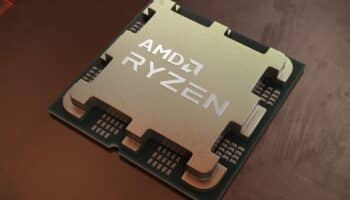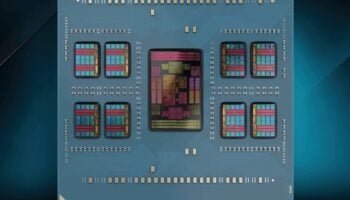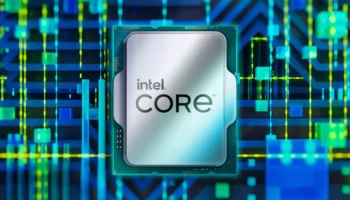Over the past two years, AMD has achieved incredible success in the PC and server markets. The chipmaker went from being non-existent in the server space to conquer more than 10% of the share in less than a handful of years. Similarly, the desktop processor market has also been reacting very positively to the company’s Ryzen products with many regions seeing complete domination over rival Intel parts. AMD also re-entered the mobile processor market with Renoir last year, following it up with Cezanne and plans to launch Rembrandt early next year.
AMD CFO Devinder Kumar during the Deutsche Bank Technology Summit laid down the chipmaker’s plans and priorities for the coming years. It looks like AMD is laser-focused on the server and mobile segments. This means that the Epyc-SP will get preferential treatment in terms of roadmap execution, supply, and marketing. Side-by-side, the mobile markets will be targeted with a yearly cadence.
Update: There was a mistake in translating the quote from the source site. The original quote reads as follows:
Q. And how does AMD prioritize where it allocates that supply? You have your client business, your graphics business, the server business, the semi-custom business, you have a bunch of other details within that. But is those four buckets, is it something that there is a clear hierarchy of where you prioritize? Or does it rotate around depending upon seasonality and specific customer demands?
A. Well, there are two things, right? The first priority is if we’ve made a commitment to our customer, we want to make sure that we can supply the parts to the customers. And overall, from a viewpoint of forecast from our customers and us putting in place the capacity and getting the wafers or substrates or ATMP capacity, we want to make sure that we balance all of that.
And in some sense, the relationship of sharing that information with customers and suppliers has gotten better. Many of our customers know that if they don’t give the signals with the specificity of timing in particular as to when they need the parts, they may not get the parts, so that’s priority number one. You made a commitment, you go ahead and deliver to the parts.
Then the second thing you look at it from an overall standpoint, demand versus supply, where, obviously we can prioritize the data center is a very high priority from that standpoint. And then the PC business, in particular, with the higher end of the stack, we want to make sure that we can maintain and continue to grow the business in that area. That’s a very high priority and then you take it from there. It is not as simple as that make it to be. It’s a pretty complex equation because you have customers, and you need to make sure that they have the rest of the positive need to go ahead and take your products and actually ship customers to the end customer, for example, in the PC space, you hear about MAC sales, you can get the chip, but you may not be able to get other components. And that is something that we take into consideration as we go ahead and supply the units because we also don’t want to have a situation in any particular area, whether it’s an over-inventory situation, just because we put the parts off from our product standpoint.
Devinder Kumar, AMD CFO
We apologize for any confusion caused and will be more careful with foreign sources from here on. Even though the company didn’t directly say this, from what we’ve seen this is indeed the case. Products with higher margins will be prioritized such as the Epycs and higher-end Ryzens alongside the consoles, and then the Radeon GPUs. Hopefully, this will change next year.
According to rumors, mass production of Rembrandt has already started, and the lineup is on track for a Q1 2022 launch. If you’ve forgotten, Rembrandt will be the successor to Cezanne in the mobile processor market. Although it’ll feature the same Zen 3 core architecture, it’ll upgrade the GPU quite massively.
Our highest priority is to secure revenue share, so there will be a sequential strategy in terms of products, with server products and mobile processors first, followed by high-end desktop products.Devinder Kumar, AMD CFO
This inevitably means that the desktop and DIY space will take the backseat, as we’ve seen with Zen 3. We’re yet to see a budget SKU priced under $200 or an affordable eight-core option. This could be an opportunity for Intel to capitalize on AMD’s shortcomings with the Alder Lake launch later this year.
Team Blue will finally be able to match AMD on the multi-threaded front, all the while crushing it in the single-threaded department. Regardless, the latter isn’t sitting idle. There are plans to launch Zen 3D for both the server and consumer markets with 2-3x more L3 stacked V-Cache. These chips should be potent in gaming workloads while boosting investor confidence and awarding packaging leadership to Su and Co.
On the downside, AMD is entirely reliant on TSMC for its supply and as more and more chipmakers go fabless, the need for an alternative is growing evermore. With Intel, NVIDIA, and AMD all set to rely on TSMC’s 5nm (N6 for Xe-HPG) node for the next generation of their products, competition will be fierce than ever. We’ll have to wait and see if AMD can procure sufficient supply for all its upcoming products or whether some segments will suffer at the cost of others.
Finally, let’s not talk about the GPU space. For the time being, AMD is only invested on a PR basis with most higher-end RDNA 2 parts being absent from the market. Given the slimmer profit margins, I don’t expect that will change by much. You can read what Kumar said about the company’s graphics business in the below post:
 AMD Zen 5 Strix Point/Halo, Granite Ridge & Turin: Ryzen 9000 Specs, News & Rumors
AMD Zen 5 Strix Point/Halo, Granite Ridge & Turin: Ryzen 9000 Specs, News & Rumors AMD’s Zen 5 Being Sampled: Ryzen 9000 CPUs incl. Mobile Chips Launch Later This Year
AMD’s Zen 5 Being Sampled: Ryzen 9000 CPUs incl. Mobile Chips Launch Later This Year Intel 15th Gen Arrow Lake CPUs: Core Ultra 9 285K, Ultra 7 265K & Ultra 5 245K
Intel 15th Gen Arrow Lake CPUs: Core Ultra 9 285K, Ultra 7 265K & Ultra 5 245K Intel Core i9-13900K Performance Drop with Baseline Profile on B760 Boards Explored
Intel Core i9-13900K Performance Drop with Baseline Profile on B760 Boards Explored